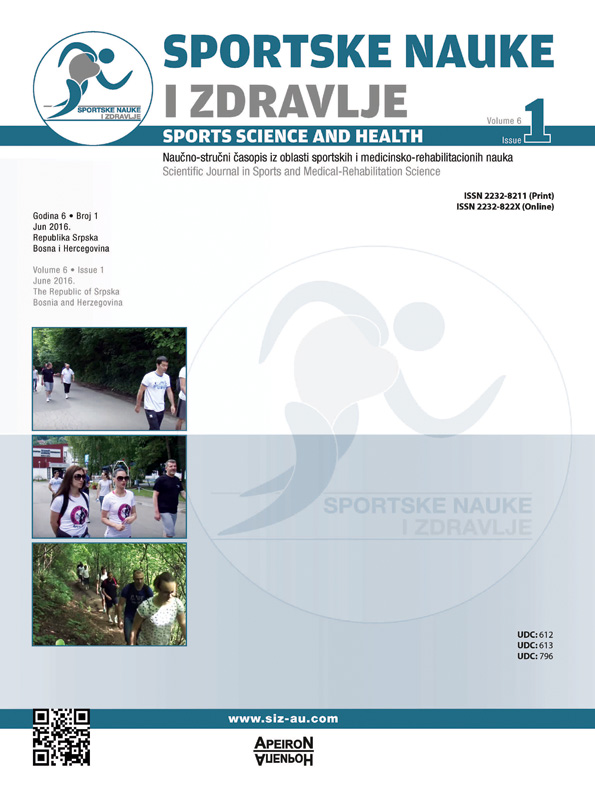Evaluacija skale percepcije aktivnog životnog stila studenata / Evaluation of the Scale of Perception of Active Lifestyle of Students
DOI:
https://doi.org/10.7251/SSH16005NAbstract
In that context of ever more intensive affirmation of active lifestyle, the problem of the presence of healthy lifestyle habits in the young population is today one of the most frequently asked questions when evaluating their conditions of life and work. Research shows that there is a growing trend in the number of youth, especially amongst the student population, who predominantly exhibit lifestyle habits characterized as unhealthy.
The research conducted on a sample of 240 examinees, students of The Faculty for Sports and Tourism from Novi Sad and the College of Vocational Studies for preschool teachers and sports trainers from Subotica, had as an aim to identify the necessary components that would reflect the construct of the scale used to determine the basic elements of perception of active lifestyle in the student population. By applying the purposefully constructed questionnaire (Perception of Active Lifestyle) an evaluation was conducted of a certain number of indicators pointing to perception intensity of the presence of healthy lifestyle determinants in students.
The results show that the applied questionnaire is distinguished by 15 stable indicators (items), and that the PAL scale has a good internal consistency (C. alpha = .865). By factor analysis, a suitable scale validity was determined (KMO = 0.690); (Sig=0.000), and the analysis of main components achieved a statistically acceptable parsimony and defined a single constituent structure. It is possible to apply this questionnaire as a unique scale that results in average value (scalar average) in manifested space, calculated from the grades given by the examinees to certain aspects of individual perception of active lifestyle.
